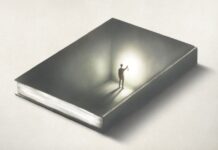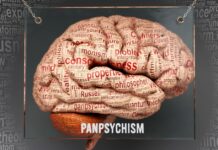Vivien and I are just back from a driving tour of Italy. It’s prompted a few thoughts I’d like to share and which has made for a rather long newsletter.
Whenever I visit Rome, I try to call in on the Campo dei Fiori (Field of Flowers), an optimistically-named city center piazza not far from the Forum. The only flowers that might be seen there today are those being sold in bunches by merchants. Most of the traders sell junk food, candies, soda drinks and tat.
But there is something amazing in the square, unknown to most, though it’s very large and can easily be seen. They just don’t know the significance of the erection. It’s an oblong column, mounted by the hooded statue of a monk, who was one of the greatest minds in history.
Here’s me, September 2023, standing at his feet once again…

Forget Isaac Newton, Aristotle, Nietzsche and Einstein… THIS figure is Giordano Bruno (Gordon Brown in the English vernacular). His vision of Nature was greater, in a sense, than any of the other four, his courage immense, and he paid for it. He was, truly, an angel walking among us. But I don’t mean that in the sense of some pure saintly creature. He was far from sweet! I mean a divine visionary; just a bit grumpy and rude, is all. So what?
Corey S. Powell, of Discover magazine, says of Bruno, “A major reason he moved around so much is that he was argumentative, sarcastic, and drawn to controversy… He was a brilliant, complicated, difficult man.”1
F H Jacobi, an important 18th century German “influencer” as we would say today, while praising him, refers to Bruno as this “dark man”.
Pompous and arrogant is another description of his manner I found and “showing little patience with anyone who even mildly disagreed with him.”2
The Roman Catholic Church, in its unutterably barbaric and depraved way, destroyed him horribly (burned alive). For what crime? His unacceptable ideas.
Giordano Bruno (1548–1600) was one of the most adventurous thinkers of the whole Renaissance…
He was among the first intellectuals to embrace the radical heliocentric idea of Nicholas Copernicus; that the earth circled the sun and not the other way round.
Bruno expounded what he called a “new philosophy”. It disproved the axioms of Aristotelian natural philosophy, notably the idea that physical world elements occupied or strove to return to their natural places, that is, the elemental spheres, at the center of the cosmos.
In modern times, we would now recognize that as a version of chaos theory: when there is a minor perturbation, things do NOT naturally tend to sink back to how they were, as everyone THINKS. In fact they swing further and further from equilibrium until—as the metaphor goes—the fluttering of a butterfly’s wing in one part of the world can release a full-scale hurricane in another zone!
Bruno was an extravagant, wayward genius—FAR ahead of his time—and far, far beyond the pygmy minds of his contemporaries and the controlling religious fascists of the day… Indeed, he can claim to be the first thinker since antiquity to integrate a metaphysics, physics, psychology, cosmology and ethics into an original, if unsystematically presented, philosophy, one that aspired to go beyond the boring re-elaborations of Platonism, Aristotelianism and the other “old” philosophies that were held in place as Christian dogma.
According to Bruno, the universe was infinite, populated with a creative consciousness and filled with numberless solar systems, reaches and dimensions.
He also held that the universe was eternal. As such, it exhibited all possibilities at any given moment, and all parts of it assumed all possibilities over time. It’s practically quantum physics!
Bruno proposed that the stars were distant suns surrounded by their own planets (exoplanets), and he raised the possibility that these planets might foster life of their own, a cosmological position known as cosmic pluralism. Scholars have trouble grasping that idea, even today.
[read more at: https://plato.stanford.edu/entries/bruno/]
Other studies of Bruno have focused on his qualitative approach to mathematics and his application of the spatial concepts of geometry to language. Like I said, a genius almost without match!
In addition to cosmology, Bruno also wrote extensively on the art of memory, and created a loosely organized group of mnemonic techniques and principles.
Yet paradoxically, despite his emphasis on the forward movement of knowledge and progress, he was deeply influenced by the presocratic Empedocles, Neoplatonism, Renaissance Hermeticism, and a Book of Genesis-like legends surrounding the Hellenistic conception of Hermes Trismegistus.
In keeping with these ideas, Bruno proposed versions of metempsychosis (re-incarnation), polygenism (in the sense of human origins from beyond planet earth) and Panpsychism—now the ruling model of switched-on thinkers (the idea of God, or soul, or consciousness everywhere and within everything) and the essential identity of human, plant and animal souls.
Spiritually, he renounced the Christian emphasis on human imperfection, bound by the rules of a monotheistic priest-ridden hierarchy, and advocated instead a morality that exhorted individuals to perfect their own intellectual powers.3
You can see why this guy was headed for trouble. And it came. On this spot where I am standing, in 1600, he was burned to death as a heretic. In a final sadistic and evil touch, the Church had him fitted with a metal gag so that while he died he couldn’t yell any contaminating ideas to disturb the faithful and obedient slaves of the ruling Christian hegemony.
Life After Death
No, I don’t mean the after-life; I’m talking about how Bruno has lived on in the modern world. He’s gradually become a hero among modernist philosophers.
What first brought him to the fore was the similarity between his writings and those of Spinoza (1632 – 1677).
Equally, Bruno’s emphasis on “minims” presaged Leibniz’s famous monadic theory—the universe made up of an infinite sea of living, conscious “somethings”, called monads. Gottfried Leibniz (1646 – 1716).
Hegel, who, in his Lectures on the History of Philosophy (1827–28), praised Bruno’s writings, wild though they might be, for displaying “a sense of indwelling spirit”. The English poet Coleridge was a steadfast admirer. “This man”, he wrote in 1819, “though a pantheist, was religious”.
This new found enthusiasm led to the publication of editions of Bruno’s Italian and Latin works in Germany by Adolph Wagner (1830) and August Friedrich Gfrörer (1836) respectively, the first editions of his works in their original languages since the mid-seventeenth century.
The “Risorgimento”—the emergence of Italy and “Italianism”—was the setting for Bruno’s final rehabilitation in Italy. Pride in its cultural achievements fed into the crescendo of nationalist fervor, and led eventually to the proclamation of Italy as an independent kingdom in 1861.
Following the 1870 capture of Rome by the newly created Kingdom of Italy and the end of the Church’s temporal power over the city, the erection of a monument to Bruno on the site of his execution became feasible. The monument was sharply opposed by the snots of the clerical party, of course, but was finally erected by the Rome Municipality in defiance of them and inaugurated in 1889.
The intellectual hero had finally come home.
A Martyr To Science
Bruno’s case is still considered a landmark in the history of free thought and the emerging sciences. He has been described as a martyr to science.
Bruno clearly saw a bigger, grander and less tameable universe than anyone up to his time (and most wannabe scientists since his time!) How did he know that stars were just other suns, like ours, and with their own worlds, just like ours? To me, it’s simple, though I don’t expect many of you to keep up with me… HE WAS THERE!
If we truly are, as I maintain vast, immaterial beings, with no beginning and no end, and with no location is space or time, except that we choose to so locate ourselves, then we can be anywhere, any time. We can visit the further reaches of the cosmos, check it out, and be back in time for tea!
What some people dismiss as “day dreaming” is in fact a faculty of space-time travel that we all possess but way under-use. It’s the basis for telepathy, remote viewing, prescience and telekinesis.
He epitomizes the core precept of my own philosophical writings—that I call Supernoetics®—which is that we are all part of the infinite original mind, One Mind (Larry Dossey), I call “Primal Consciousness”. As such, we know everything. We have to selectively UN-know certain things, in order to function as humans.
But Bruno, evidently, didn’t trouble himself much with the UN-knowing bit. He stuck to what he knew and what he knew he knew!
The infinite number of universes in Bruno’s take on the Cosmos has found many echoes on modern thinking. I’m not so much thinking of the Hugh Everett endlessly dividing model but just the fact that string theory predicts at least 10 to the power 500 universes (10500, or 10 followed by 500 zeroes!)
That means that it is practically a certainty that there is another you, out there somewhere, reading the writings of a fan of a brilliant monk, called Giordano Bruno, in another space and time. Count on it!
I like to think that there are hundreds, if not thousands of universes out there, in which Giordano Bruno was not executed. Instead he lived and thrived and was loved, admired and revered. The vile beasts that had him put to death maybe in those other realities just burst into the flames of spontaneous combustion, over and over! I’d like to visit such a universe, or at least dream of going there.
And, one final thought: this model predicts we all have at least one perfect doppelganger… a real life double, out there, somewhere. Maybe I will get to meet the real “other” Giordano Bruno, some day! I’ll be very happy if I do.
Ha!
Important Epilogue:
The Catholic Church has never apologized for its barbarism. As recently as 2000, Vatican apologist Cardinal Angelo Sodano defended Bruno’s prosecutors, maintaining that the Inquisitors “had the desire to serve freedom and promote the common good…”4
Well now, here’s the point, in case you missed it. Haven’t we moved back into such times, where dissenting thought is not allowed and “heretics” are to be censored, de-platformed and destroyed, to protect the common good? I think so. Human progress was held back by CENTURIES, thanks to the ruling bullies of the Catholic Church, using evil justified as “doing good”.
Now we are going backwards, not forwards. This time it’s not a religious matter but a secular mob. Nevertheless, evil remains evil, no matter how much it is defended and explained away, all in the name of “freedom”.
To your good health,
Prof. Keith Scott-Mumby
The Official Alternative Doctor
References:
- Powell, Corey S. (10 March 2014). “Did Cosmos Pick the Wrong Hero?” Discover. Kalmbach Publishing. Archived from the original on 16 March 2014. Retrieved 16 March 2014
- Feingold, Mordechai; Vickers, Brian (1984). Occult and scientific mentalities in the Renaissance. pp. 73–94. doi:10.1017/CBO9780511572999.004. ISBN 978-0511572999
- https://plato.stanford.edu/entries/bruno/
- https://en.wikipedia.org/wiki/Giordano_Bruno




